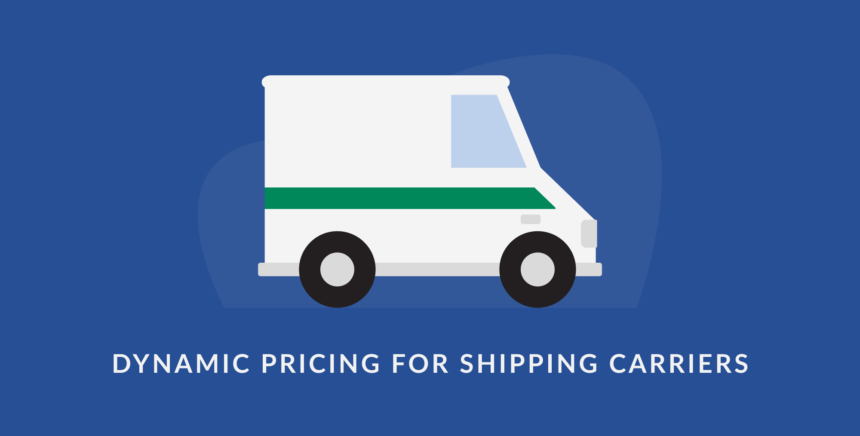In today’s fast-paced world, adaptability is essential to success, especially in the shipping industry. As consumer expectations rise and market conditions change, carriers are changing the way they set prices. Fixed price systems are becoming obsolete. Instead, dynamic pricing, which adjusts based on real-time supply and demand, is on the rise.
Understanding this change is essential for both businesses and consumers. As shipping becomes more complex, knowing when to ship, how pricing works, and what tools you can rely on can have a big impact on your spending. Let’s take a look at how this change reflects our daily experience and what it means for the future of shipping.
What is dynamic pricing in shipping?
You may not be familiar with the term “dynamic pricing,” but you’ve probably experienced it. For example, consider how ticket prices change based on demand as a flight or concert date approaches. If you try to buy a ticket one day, you might be surprised to see that the price has changed when you look again a few days later.
Similarly, in the world of shipping, rates can change in real time based on factors such as demand, capacity, and even time of year. Understanding these changes will help shippers plan ahead, secure better rates, and avoid last-minute surprises.
Dynamic pricing in shipping refers to a flexible pricing model in which shipping rates are adjusted based on a variety of real-time factors. These include demand, shipment volume, distance, fuel costs, desired delivery speed, etc. Unlike traditional fixed rates, dynamic shipping rates fluctuate to reflect current operating costs and market conditions, allowing carriers to optimize revenue and efficiency.
With this in mind, shipping companies are changing the way they set their prices. Rather than keeping prices the same for most of the year, it adjusts prices based on what’s happening in the market. This will help you stay competitive.
How dynamic shipping rates work for carriers
Dynamic shipping rates use automated pricing calculators to adjust prices in real time. Here’s how this process works:
- Real-time rate adjustment: Carriers monitor various factors that can affect shipping costs. For example, if demand spikes during the holiday season, airlines may temporarily raise prices.
- Distance and package size: The longer your package travels or the larger the package, the more expensive your shipping costs can be.
- shipping speed: Customers often pay more for expedited shipping. Dynamic pricing models allow carriers to adjust rates based on requested delivery speeds to balance demand and available capacity.
Dynamic Pricing vs. Traditional Fixed Rates: What’s the Difference?
While traditional fixed rates are predictable, they can sometimes lead to inefficiencies as customers may end up paying more than necessary for a particular package.
In contrast to fixed pricing, dynamic pricing models allow you to:
- provide flexibility: Prices are adjusted according to real-time data, so customers can benefit from lower rates during off-peak hours.
- Reflects current market conditions: Customers always receive a price that accurately represents the cost of shipping.
Competition is the main motivation for carriers to adopt dynamic pricing. With numerous shipping options available, delivery companies must remain agile to attract customers. This flexibility allows us to offer competitive rates that reflect current market conditions and protects you from losing business to competitors.
Dynamic pricing also benefits customers by allowing carriers to adjust prices and pass on savings when demand declines or operational efficiencies are realized. This approach fosters healthy competition between carriers and ultimately provides more value to customers.
The future of dynamic pricing for carriers
As the logistics industry continues to evolve, dynamic pricing is likely to become the norm for carriers. The trend toward automated and flexible pricing not only improves operational efficiency, but also improves customer experience.
In the future, you can expect:
- Enhanced automation: More sophisticated algorithms will allow carriers to quickly fine-tune their pricing strategies.
- Enhanced customer tools: Customers can benefit from improved tools to help them navigate these changes and choose the shipping option that best suits their needs.
- Improving market responsiveness: Carriers continually adjust their pricing in response to fluctuations in demand, ensuring they remain competitive and cost-effective.
how we can help
At ShippingEasy, we understand that as shipping rates become more dynamic, it can be difficult for businesses to stay informed. Compare rates across carriers and services so you’ll automatically get the best rate. You can also set up automation to automatically get the best rate for your intended shipping window every time an order is imported. This not only saves you money, but also improves operational efficiency by reducing shipping time and clicks.
Here’s how we support our customers:
- Real-time access to competitive prices: Our platform offers up-to-date shipping rates adjusted by carriers, ensuring you always get the best deal.
- Various career options: We offer discounted shipping rates on all major carriers using rate shopping and automation tools to help you choose the shipping rates and services that best suit your shipping needs.
At ShippingEasy, we are committed to supporting our customers through these changes and making sure they stay informed and have the tools they need to make their shipments successful.
Maria is a veteran content marketing manager at ShippingEasy, bringing a wealth of expertise to the world of shipping and fulfillment. When she’s not immersed in the world of logistics, Maria enjoys exploring her culinary creativity by experimenting with different recipes.








